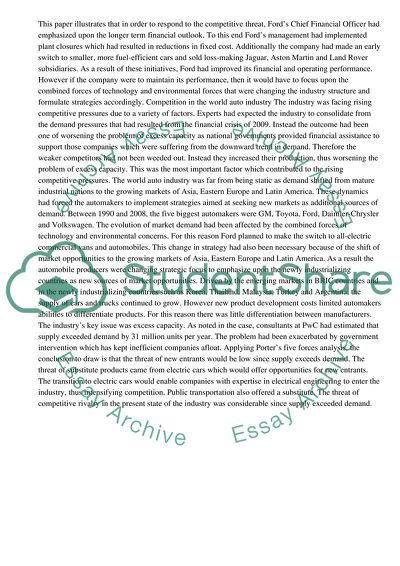Cite this document
(“Ford and the World Automobile Industry Essay Example | Topics and Well Written Essays - 2250 words”, n.d.)
Retrieved from https://studentshare.org/business/1416473-business-policy-and-strategic-management-case
Retrieved from https://studentshare.org/business/1416473-business-policy-and-strategic-management-case
(Ford and the World Automobile Industry Essay Example | Topics and Well Written Essays - 2250 Words)
https://studentshare.org/business/1416473-business-policy-and-strategic-management-case.
https://studentshare.org/business/1416473-business-policy-and-strategic-management-case.
“Ford and the World Automobile Industry Essay Example | Topics and Well Written Essays - 2250 Words”, n.d. https://studentshare.org/business/1416473-business-policy-and-strategic-management-case.


